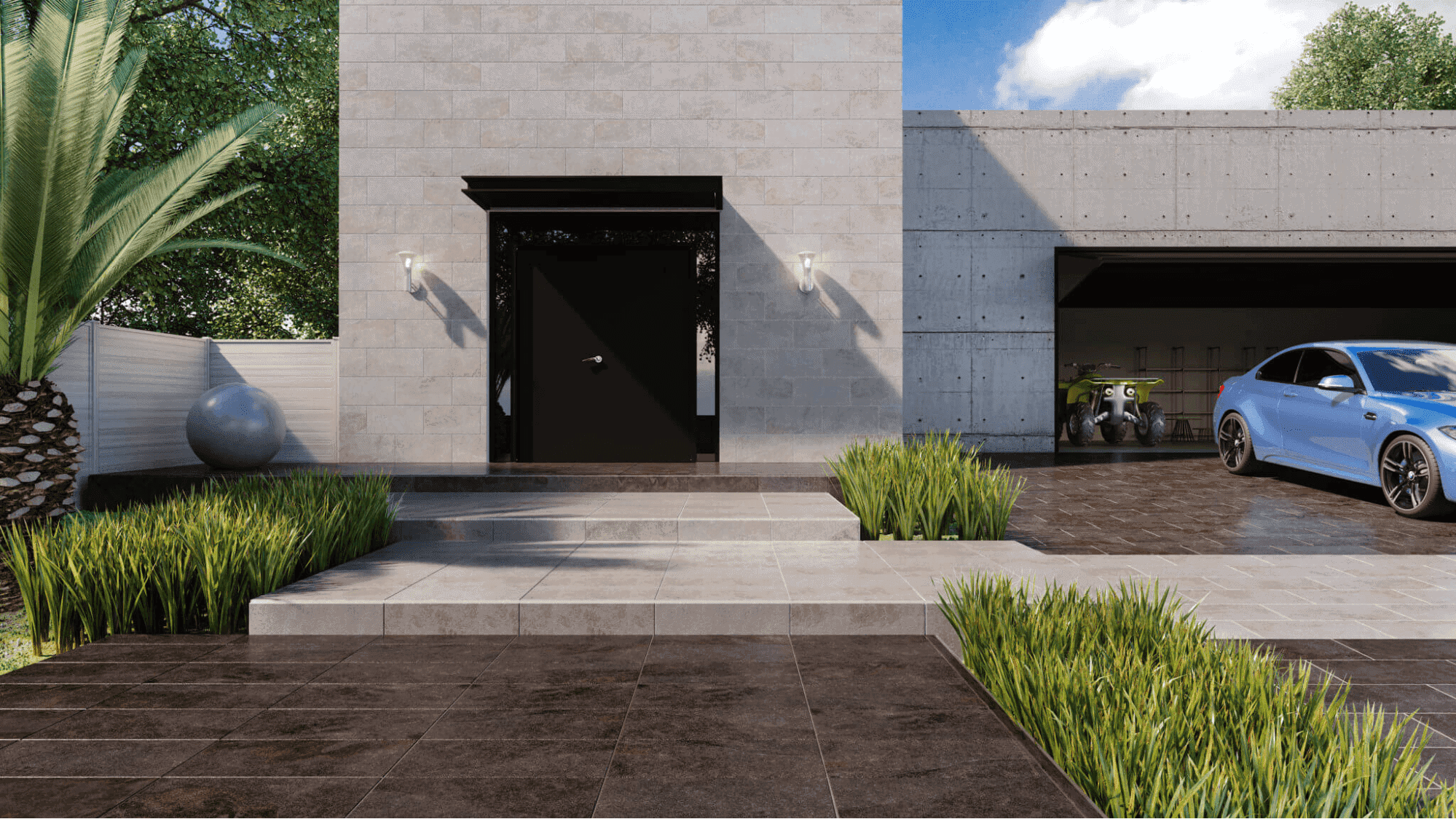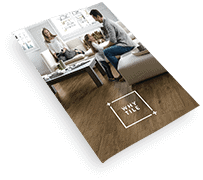The demand for outdoor living spaces in both residential and commercial projects has grown tremendously in recent years. This market trend has also seen growth in the use of pavers for outdoor spaces.
Modern outdoor pavers can create as much style outside as your inside decor (and even transition inside to outside) with a consistent style. .
Given the growing popularity of pavers in outdoor spaces, the Tile Council of North American (TCNA) published the world’s first industry standard for gauged porcelain pavers as part of ANSI A137.3 American National Standard Specifications for Gauged Porcelain Tiles and Gauged Porcelain Tile Panels/Slabs a new standard characterizing them: ANSI ASC A108. The new standard will help consumers and specifiers know what to expect in terms of performance from gauged porcelain tile pavers.
What Are Porcelain Pavers?
Pavers are flat construction materials typically used as outdoor paving. While there are numerous types of pavers to choose from, gauged porcelain pavers have been growing in popularity because of their added durability and style options.
Gauged porcelain tile is porcelain tile produced to a specific thickness. Traditional porcelain tile is usually in the 8–10 mm range of thickness while gauged porcelain tile can be as thin as 3.5 mm. Gauged porcelain pavers can reach 2 cm and thicker. This added thickness, combined with the durability and low maintenance of porcelain, makes gauged porcelain pavers well-suited for a variety of outdoor applications.
[Related: Get the Skinny on Thin Tile]
Benefits of Gauged Porcelain Pavers for Outdoor Spaces
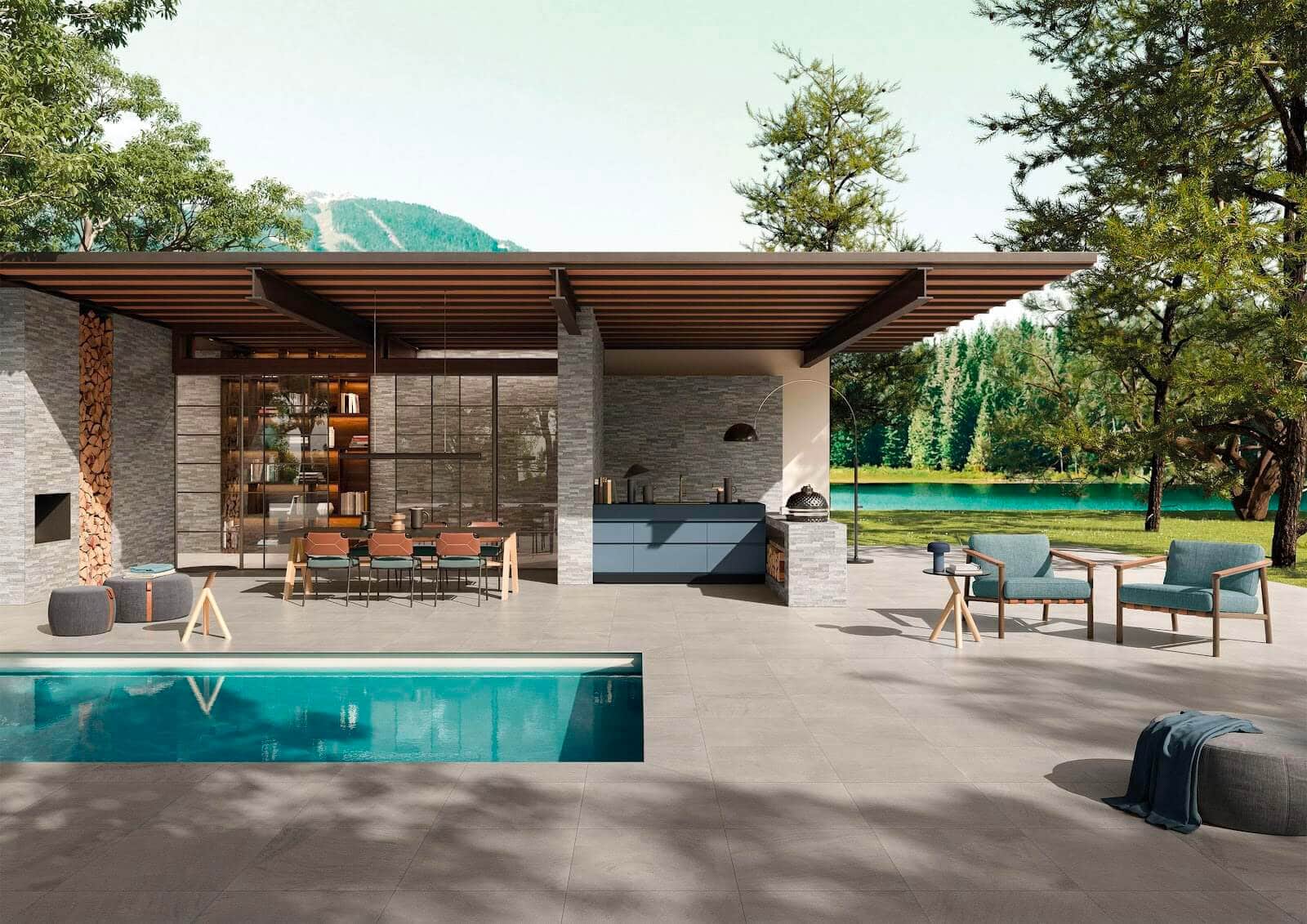
As part of the ceramic tile family, gauged porcelain pavers carry all the benefits of ceramic tile, which include water-, scratch-, stain-, fade-, fire-, and bacteria resistance.
Easy to Install, Replace, and Remove
Thanks to their size and density, it’s possible to loose-lay, or install pavers on-ground or on-grade without the use of adhesives and unbonded. With proper preparation in accordance with manufacturer instructions, this outdoor paving material can be installed in a variety of landscapes.
Unbonded installations enable you to replace, reposition, and remove them individually if needed. Maybe your style has changed, or you’re changing the layout of your outdoor space. Either way, you’ll appreciate being able to move them!
Pro tip: It’s also possible to install them with adhesives as you would with traditional tiles. Bonded installation is recommended in any area subject to high static or dynamic loads. Keep reading to learn more about your options when installing gauged porcelain.
Weather Resistance
Outdoor porcelain pavers stand up to the elements with the following features:
- Moisture resistance: Porcelain pavers are impervious to moisture, which gives them resistance to staining and cracking without special maintenance or treatments.
- Thermal shock resistance: Because gauged porcelain is fired at extremely high temperatures, they are incredibly dense and inert. This enables them to withstand sudden and extreme temperature changes.
- Frost resistance: The density and their impervious nature allows them to withstand freeze-thaw cycles.
- Fade resistance: Porcelain’s baked-in color ensures your outdoor tile pavers won’t fade from the sun, no matter how sunny your climate. They also won’t fade from pool chemicals.
Low Maintenance
One of the biggest benefits of porcelain outdoor pavers compared to other outdoor materials is low-maintenance care:
- No sealers: Unlike concrete, there’s no need for sealers or protective coatings.
- No staining: You won’t have to paint or stain your pavers, as you would with a wood deck.
- Stain resistance: This building material is resistant to stains caused by leaves, dirt, grass, outdoor cooking, or food and beverage spills.
- Scratch resistance: The density helps them withstand outdoor debris from scratches.
- Mold and mildew resistance: Porcelain is completely inhospitable to bacteria, so you won’t have to worry about the growth of mold or mildew.
- Chemical resistance: The ingredients that make up pavers are inert and thus won’t react with chemicals or acids, including common household cleaning products and pool additives.
- Easy cleaning: Have peace of mind knowing that you can use a pressure washer (up to 1500 PSI) and mild detergents to clean your porcelain pavers without fear of damage.
Safety
Exterior pavers are a smart option when you’re making choices for the safety of your family and guests:
- Slip resistance: Slippery conditions are a crucial consideration for outdoor areas exposed to rain or if you plan on using pavers in a moisture-prone area, such as around your pool. Porcelain pavers are available in slip-resistant options, and the texture you choose can also help contribute to slip resistance.
- High solar reflectance: We’ve all had to scamper across concrete in bare feet on a scorching day — it’s not pleasant. Thankfully, porcelain pavers are available in a variety of colors and finishes that can have a higher solar reflectance index than available with a brick or concrete paver. This means that they don’t absorb heat as much as some other outdoor surfaces and thus won’t become as hot to the touch.
- Flame resistance: Porcelain pavers are noncombustible and won’t burn, melt, or give off toxic fumes when exposed to flames. They can even help maintain a safe exit path in the event of a fire.
Durability
We’ve already mentioned that outdoor porcelain tile is scratch-resistant, but that doesn’t even “scratch the surface” of their overall durability.
Porcelain pavers are engineered for extreme strength and reduced breakage. Their high load-bearing capacity makes them a good option for areas that see high foot traffic and even vehicular applications.
Design Versatility
An additional benefit is that you can use them to get all of the above advantages with just about any design you can imagine.
Love wood or concrete, but worried about water damage? Porcelain comes in both wood and concrete looks.
Or maybe you want to use natural stone throughout your outdoor living area but worry about the cost or sustainability of sourcing it. Porcelain pavers have natural stone looks, too.
And natural looks aren’t your only option. Porcelain pavers are available in practically any color, pattern, and texture.
With so many porcelain paver colors and styles to choose from, you can create a look that works with your home, personal aesthetic, and budget.
Porcelain Pavers’ Cost
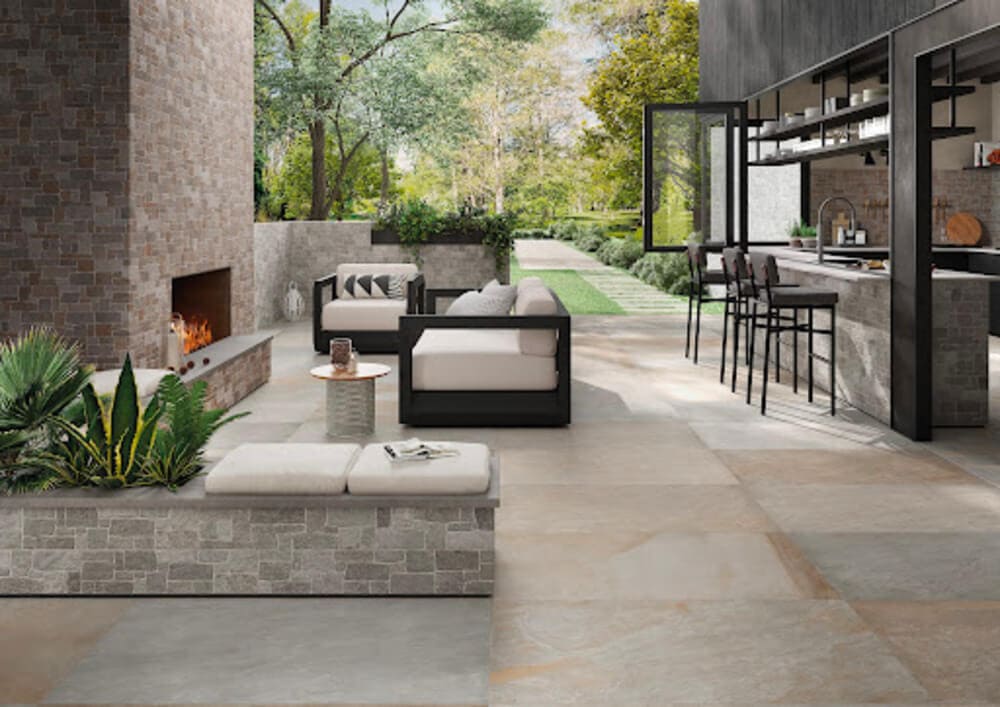
When considering the cost of any material choice, take into account any maintenance costs, including routine care, repairs, and the frequency of replacement (how long it will last).
The cost typically ranges from $7 to $10 per square foot, depending on the specific design.
When you factor in longevity and low-maintenance, quarry tile and ceramic tile (both also popular for outdoor applications), along with porcelain tile, have the lowest life cycle cost of any flooring material.
How to Install Porcelain Pavers
Consult your specific manufacturer’s instructions for installing your pavers. When it comes to installation, you typically have multiple options for installation:
- Installing pavers over an aggregate base in areas of dirt, sand, gravel, or grass
- Installing pavers on pedestals
- Bonded installations of pavers (traditional installation, such as with mortar and grout)
How to Lay Pavers on Dirt, Sand and Gravel
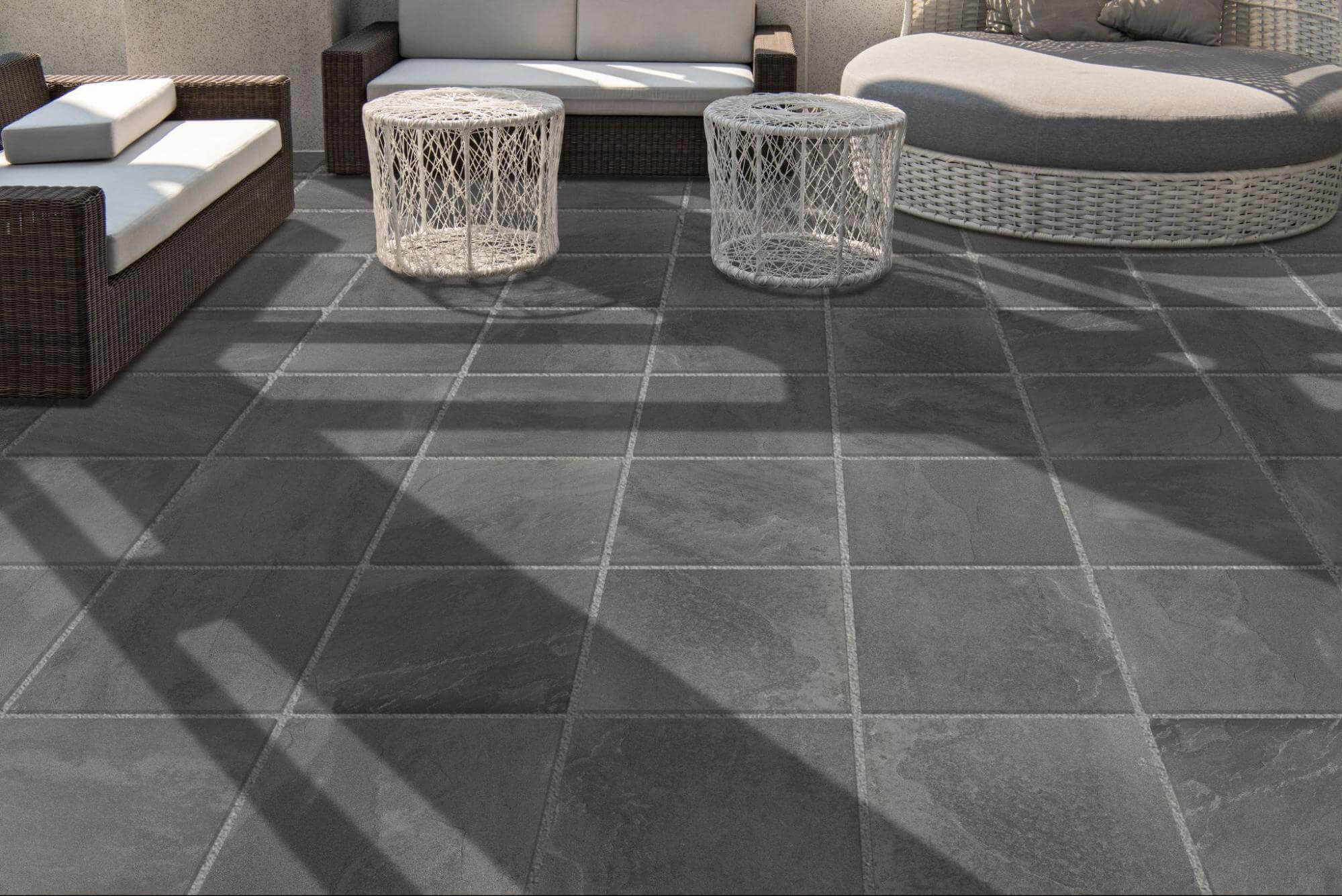
Installing outdoor pavers on dirt, sand, and gravel can be ideal because this method offers quick water drainage and enables installation where permanent flooring and buildings aren’t permitted.
Follow manufacturer instructions to lay porcelain pavers on dirt, sand, or gravel. These are typically the basic steps:
- Prepare the surface by leveling out and compacting the material (dirt, sand, or gravel).
- Position the pavers where you want them, keeping a gap of at least 1 cm between each paver (depending on your desired effect).
- Use a rubber hammer to even out the pavers.
- Fill in the joints with sand or gravel, if desired.
How to Lay Pavers on Grass
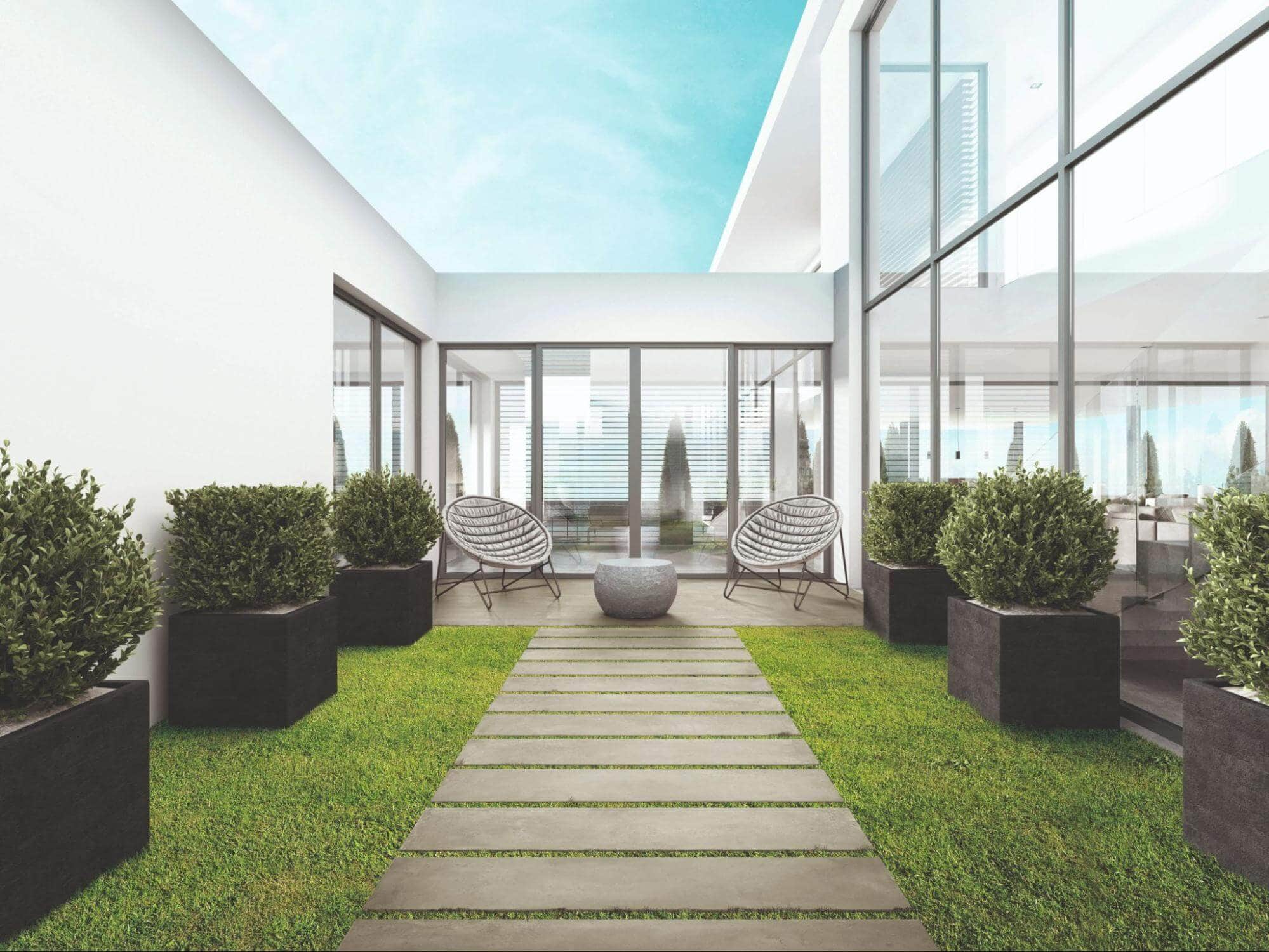
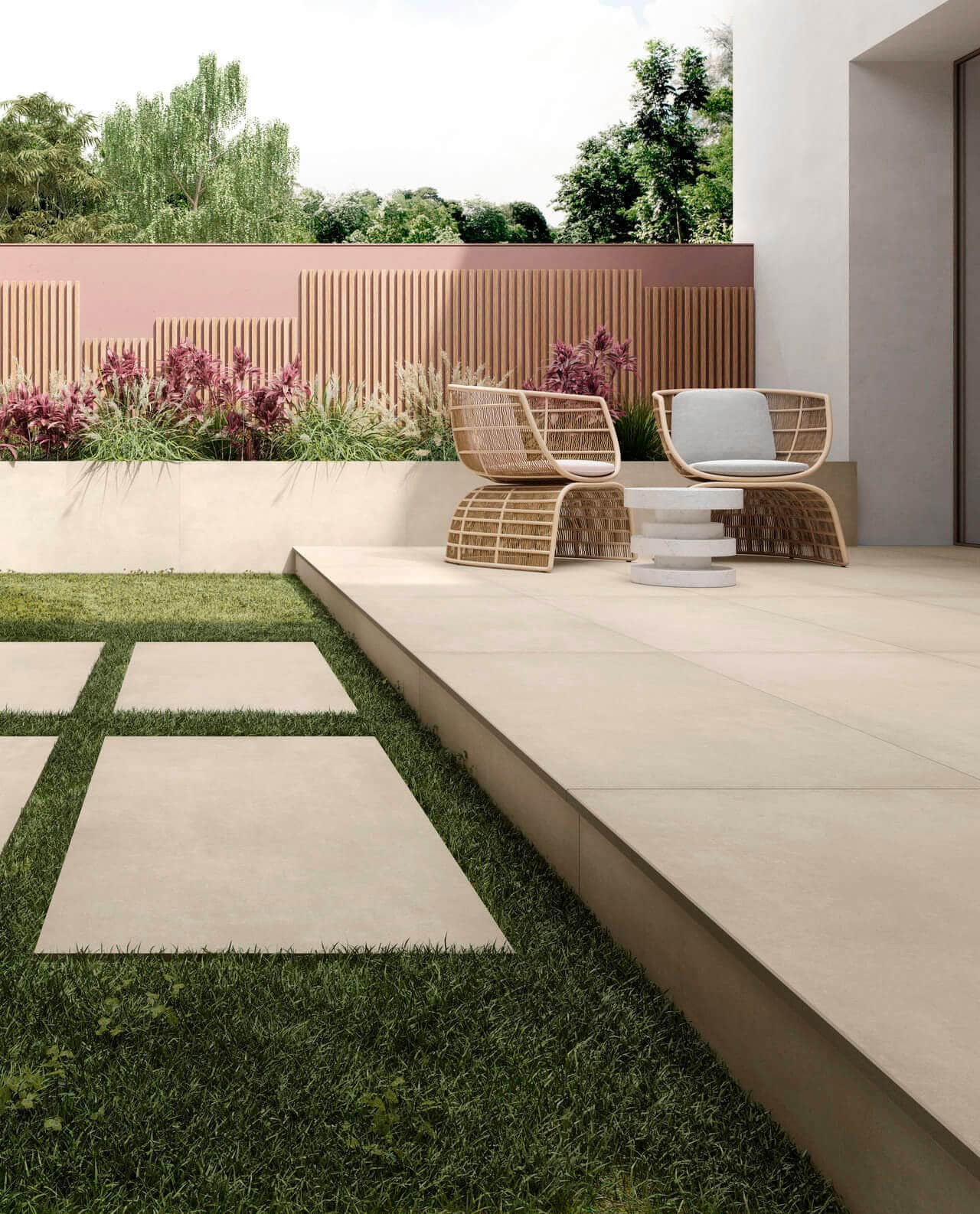
Porcelain pavers’ grass installation benefits are similar to those of installing on dirt, sand, and gravel. Installing on grass provides excellent drainage and enables you to install where you couldn’t permanently build.
Setting up pavers with grass in between also creates a high-impact look that’s growing in popularity — just see the images above.
Installing pavers over grass generally requires only four steps (but always follow manufacturer recommended instructions):
- Arrange the pavers on the grass where you want them.
- Mark the edge of each paver with a spade.
- Put the pavers aside and then remove about 5 to 6 cm of turf below the area you’ll cover.
- Where you’ve removed the turf, apply 3 to 4 cm of gravel and compact it.
- Position the pavers where you want them on top of the grave.
- Use a rubber hammer to even out the pavers and make sure they are level with the surrounding grass for ease of mowing.
How to Use Porcelain Pavers on Pedestals
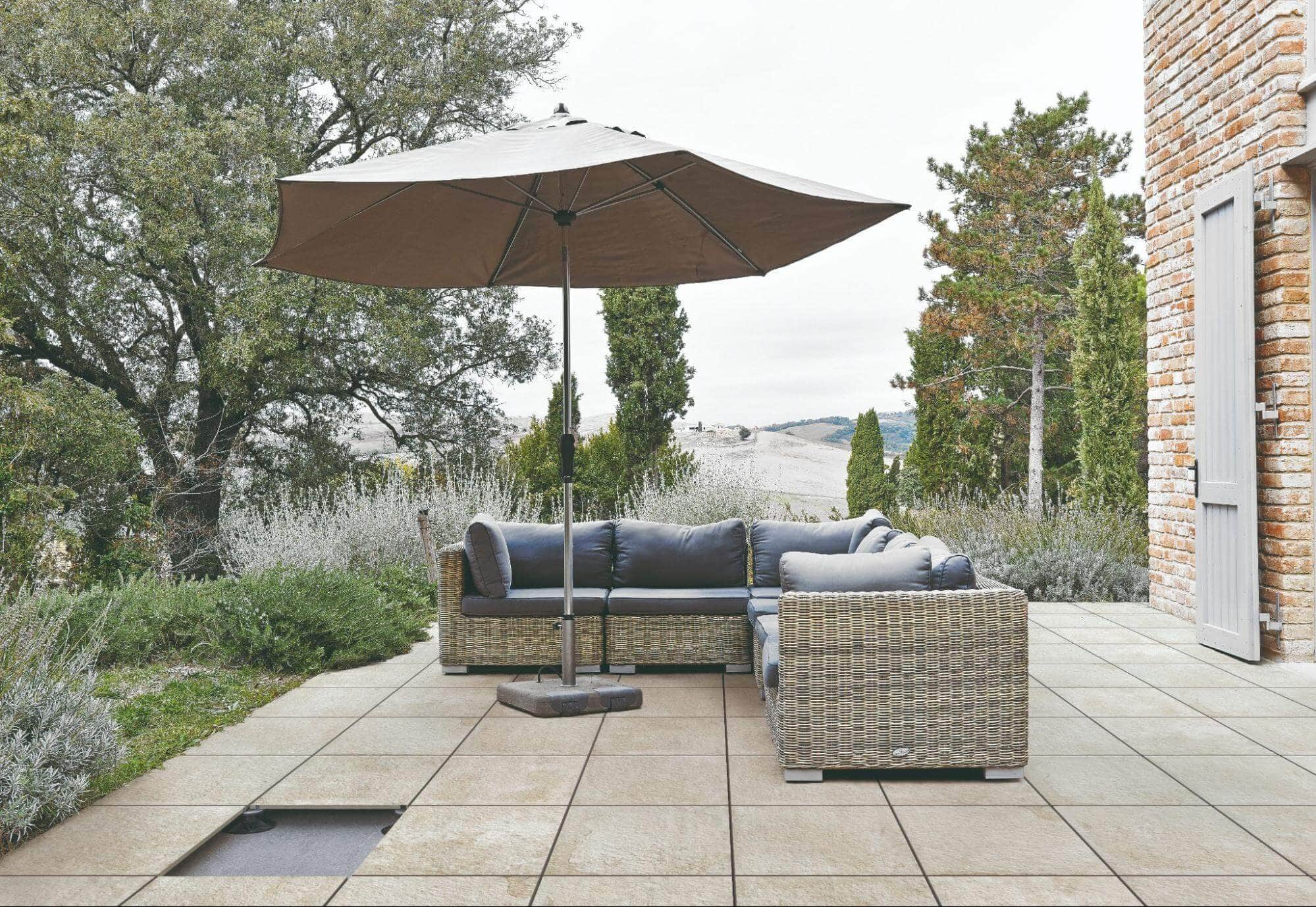
One of the most interesting advantages is that they can be installed on pedestals or raised supports. Benefits of installing floating pavers include:
- Simple installation (no adhesives required), repositioning, and removal
- Ability to install over existing flooring and compensate for slopes/unevenness on the installation surface
- No concrete slab required, reducing weight and stress on the existing structure
- Rapid water drainage because of the gaps between the pavers
- Ventilation thanks to the gap between the sheath and floor, improving thermal insulation and reducing dampness
- Excellent sound insulation
- Ability to run utilities under the flooring
- Absorption of structural shifting and expansion
Floating pavers require raised supports, which come in different types and can be set at different heights. Due to the variables involved, manufacturers recommend consulting with them directly on the type of pedestal to use and working with a qualified tile installer experienced in installing pavers on pedestals to ensure your pavers are installed correctly.
How to Install Porcelain Pavers Using Traditional Installation
Porcelain pavers can also be installed with adhesives using traditional ceramic tile installation methods.
Traditional installation is recommended for areas that will see high static or dynamic loads, such as with some driveways. Traditional installation is also recommended for pool surrounds and when you’re concerned about preventing moisture from entering the area underneath the pavers.
How to Seal Porcelain Pavers
Sealing pavers is unnecessary thanks to porcelain’s moisture resistance. So, once you install your pavers, your work is done!
How to Clean Pavers
All ceramic tile products are known for their easy cleaning, typically requiring only sweeping and mopping with clean water. Cleaning is also easy because porcelain is resistant to stains. If you need a cleanser for tougher messes, you can use cleaning products made for cleaning tile and grout.
When it comes to how to clean outdoor porcelain pavers specifically, your job is even easier: You can clean pavers (without grout installation) with pressure washers (up to 1500 PSI) without causing stripping or etching.
[Related: Easy Cleaning Tips for Porcelain and Ceramic Tile]
Porcelain Paver Designs
They come in just about any look you can imagine. However, the following examples showcase some of the most popular porcelain paver designs.
Gray Pavers
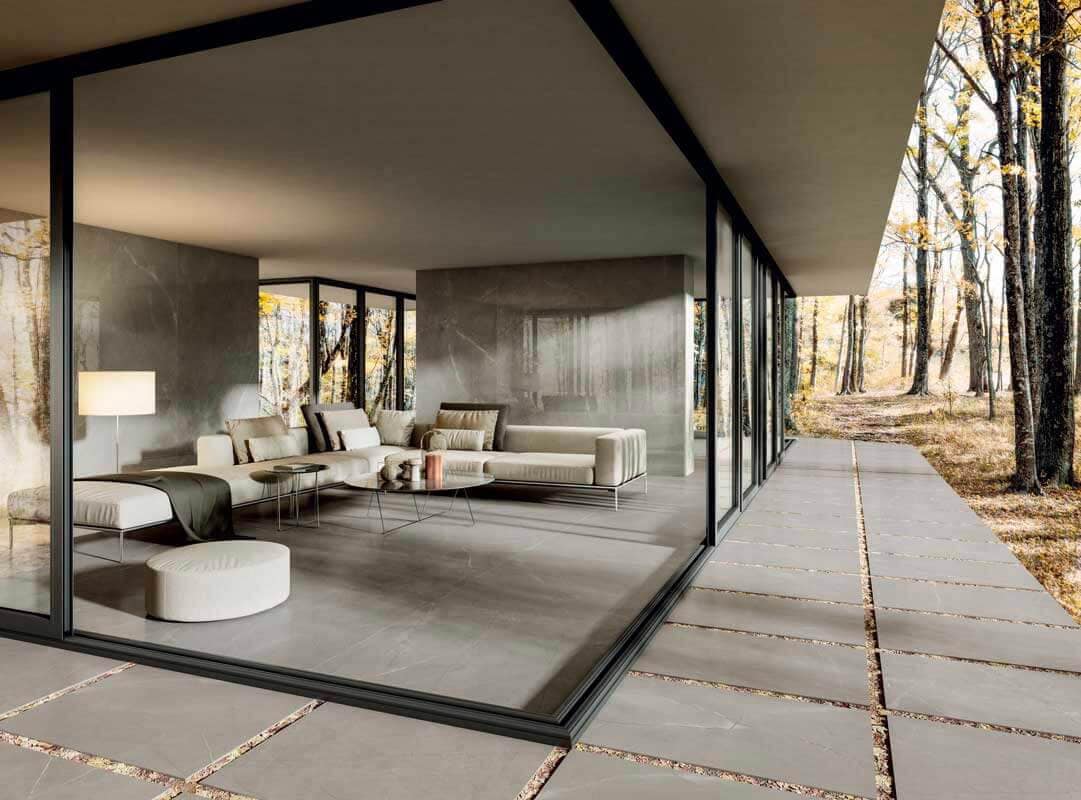
When it comes to paver colors, gray is a timeless choice. Gray patio pavers look great with just about any architectural design and outdoor decor.
Black Pavers

Black pavers are a popular option for creating a sophisticated outdoor surface that often works beautifully for transitional indoor-outdoor spaces.
Marble-Look Porcelain Pavers

Marble is just about everyone’s favorite tile look, and the same goes for porcelain pavers. Thanks to porcelain’s durability, your outdoor pavers will continue looking as pristine as they did on day one.
[Related: Tile Trend Ideas: Modernized Marble]
Wood-Look Porcelain Pavers

Porcelain enables you to create the look of wood outside without any of the downsides of traditional wood decks. That’s right: No staining, chipping, rotting from water damage, slipperiness — need we go on?
[Related: Tile Trend Ideas: Refined Natural Wood Looks]
Cement-Look Porcelain Pavers
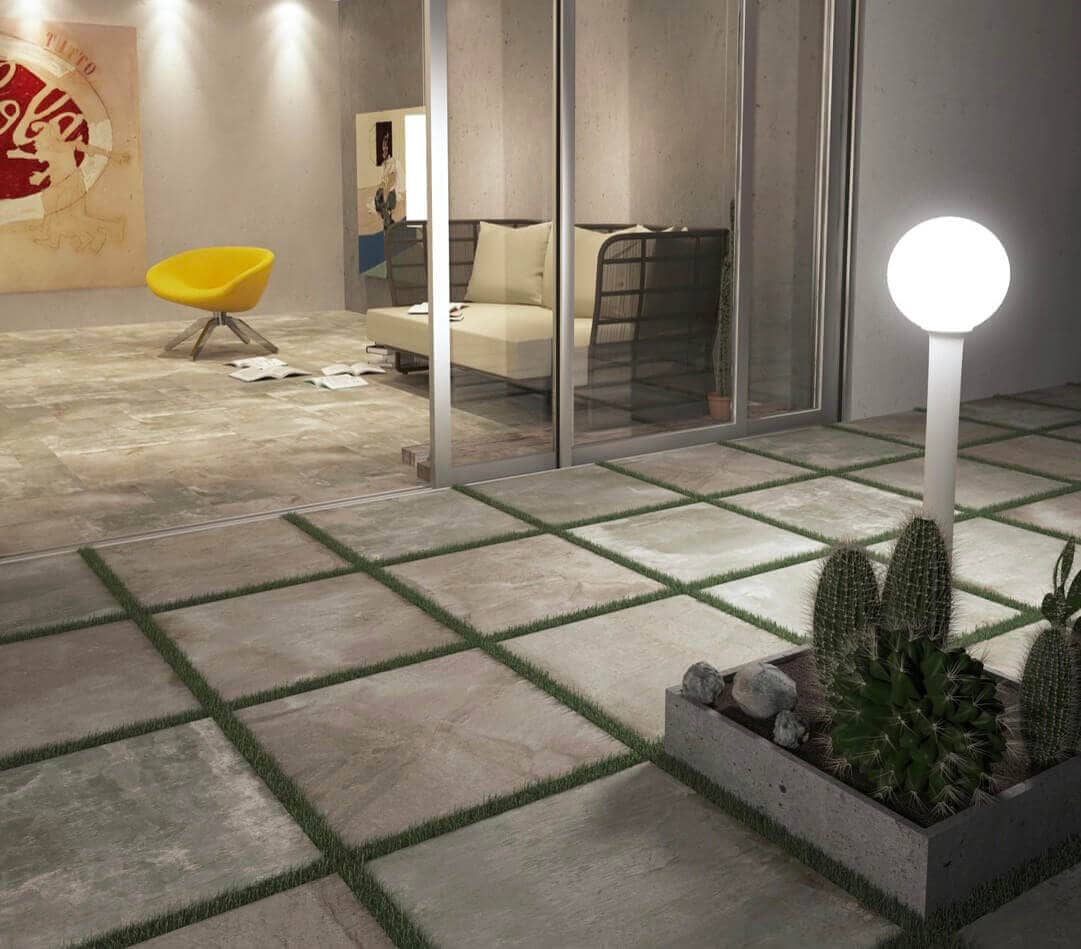
Cement has cemented its way into the design hall of fame, but no one likes to deal with its maintenance issues. Luckily, porcelain pavers allow you to create the look of cement without any cracking, discoloration, or other concerns.
[Related: Tile Trend Ideas: Industrial Chic Tile]
Terrazzo-Look Porcelain Pavers
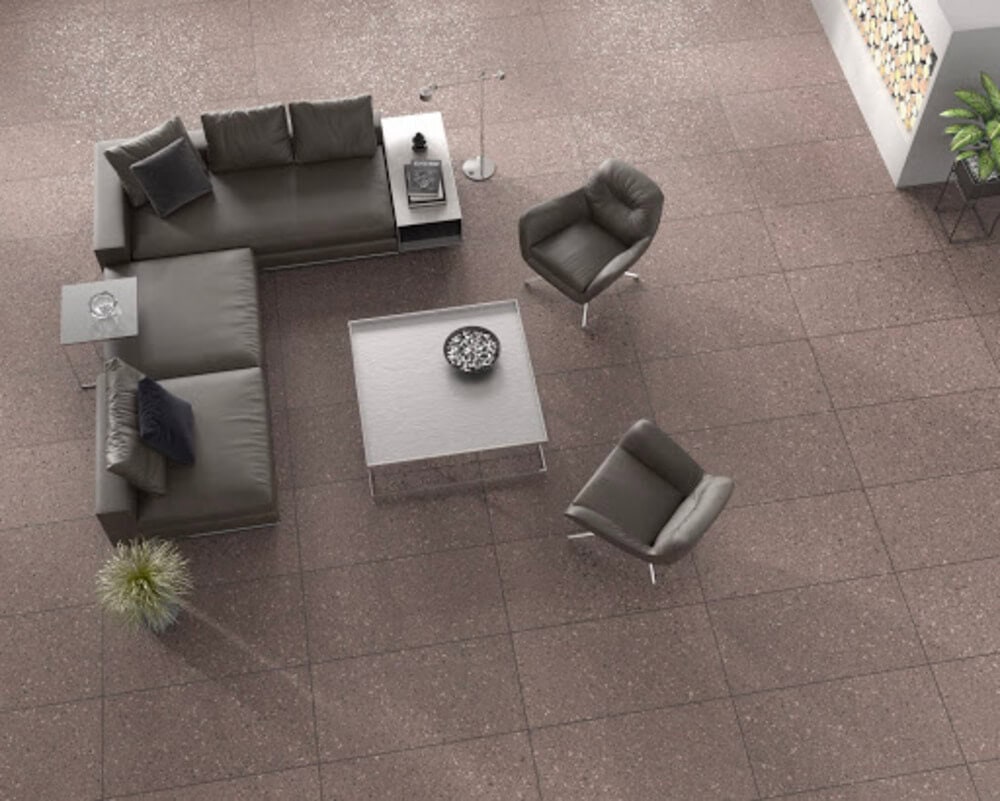
Terrazzo is a classic look for outdoor spaces. Options such as this patio design add subtle style to otherwise monochrome pavers.
[Related: Tile Trend Ideas: Assorted Aggregates]
Stone-Look Porcelain Pavers
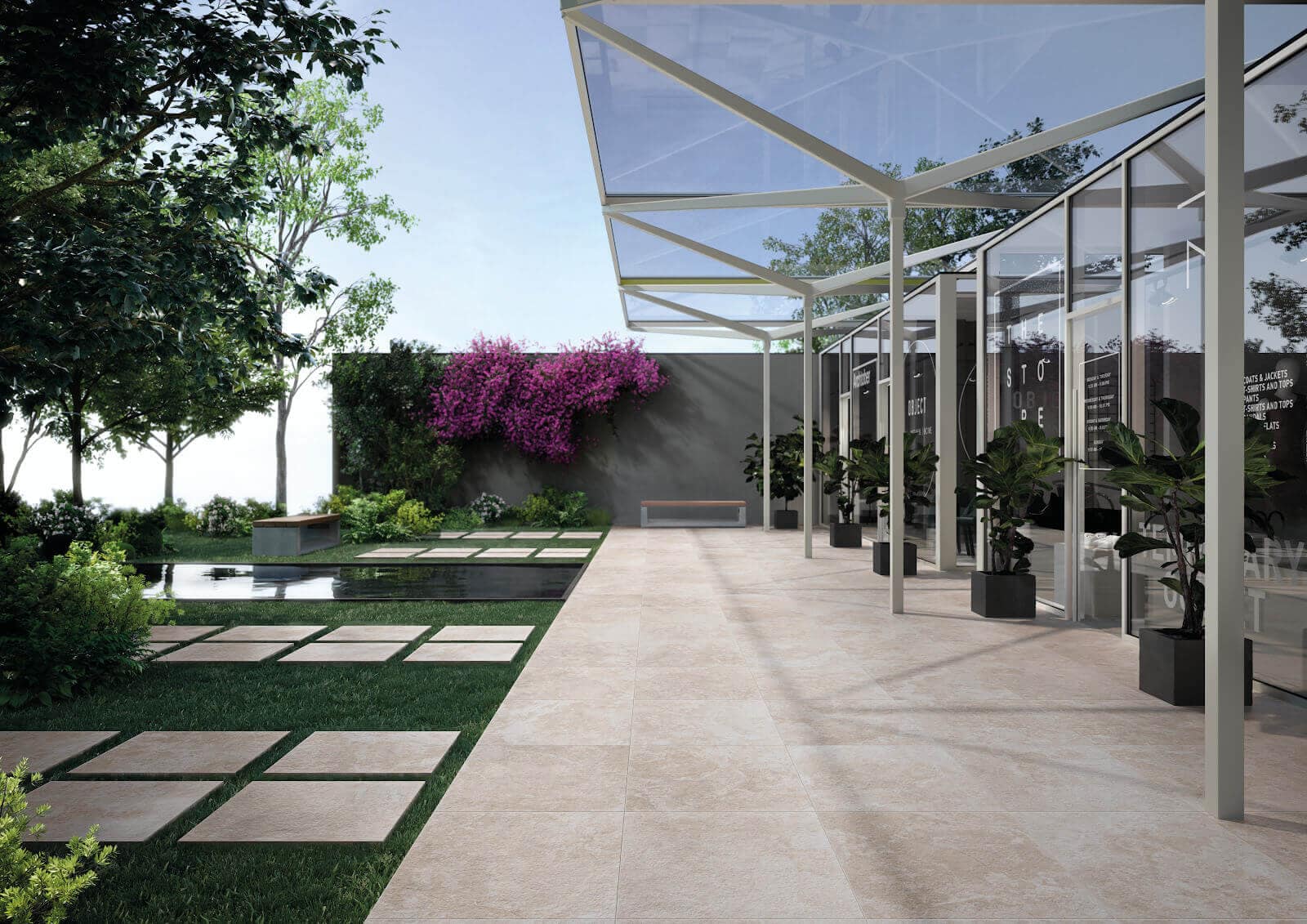
You can’t go wrong with a classic stone look — especially outdoors.
Slate-Look Porcelain Pavers

We love that slate-look pavers can be as subtle or dramatic as you want them to be, depending on the colors and design you choose.
Onyx-Look Porcelain Pavers
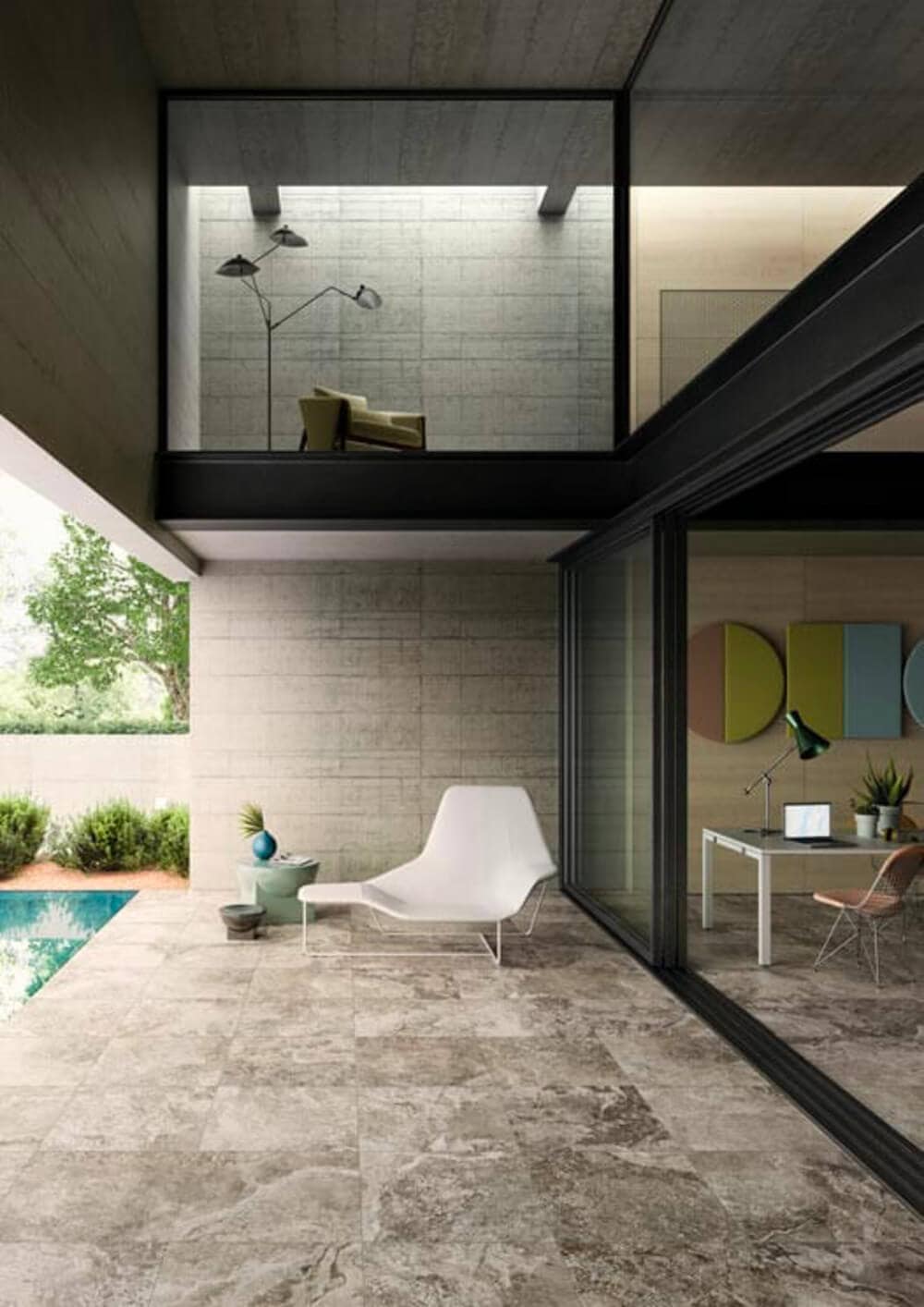
As with marble looks, onyx-look pavers can create a stunningly dramatic look in your outdoor space.
Terracotta-Look Porcelain Pavers

Terracotta-look pavers instantly transport us to the Mediterranean by creating a warm, romantic look everyone admires. (And don’t worry, they’re are a lot more durable than terracotta pavers, so you can enjoy your Mediterranean vibes without fear of damage.)
Outdoor Applications for Porcelain Pavers
Porcelain pavers’ outdoor applications are nearly as diverse as their design options.
Walkways and Pathways
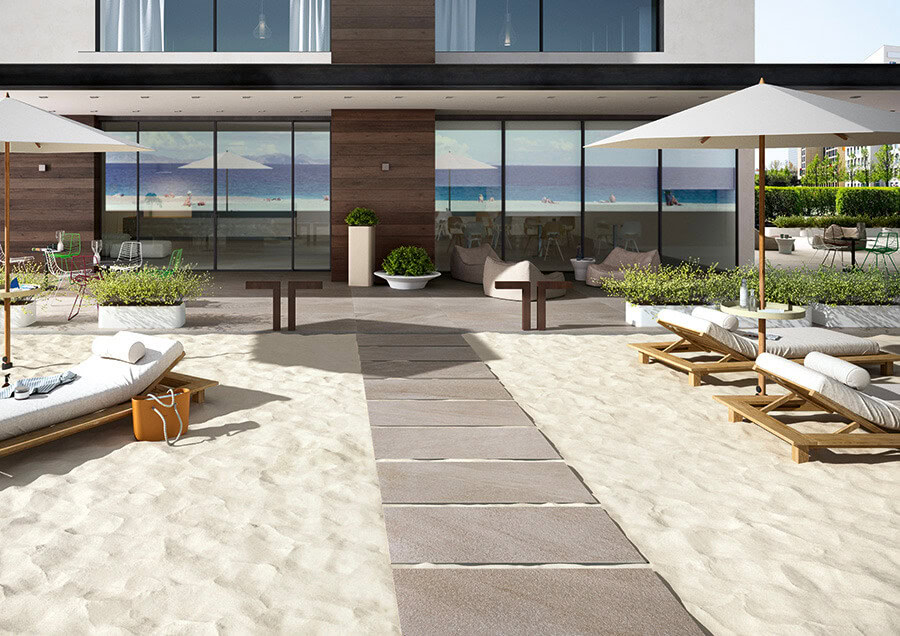
They are an ideal choice for creating walkways because they can be installed directly on top of sand, gravel, dirt, and grass.
Patios, Porches and Decks
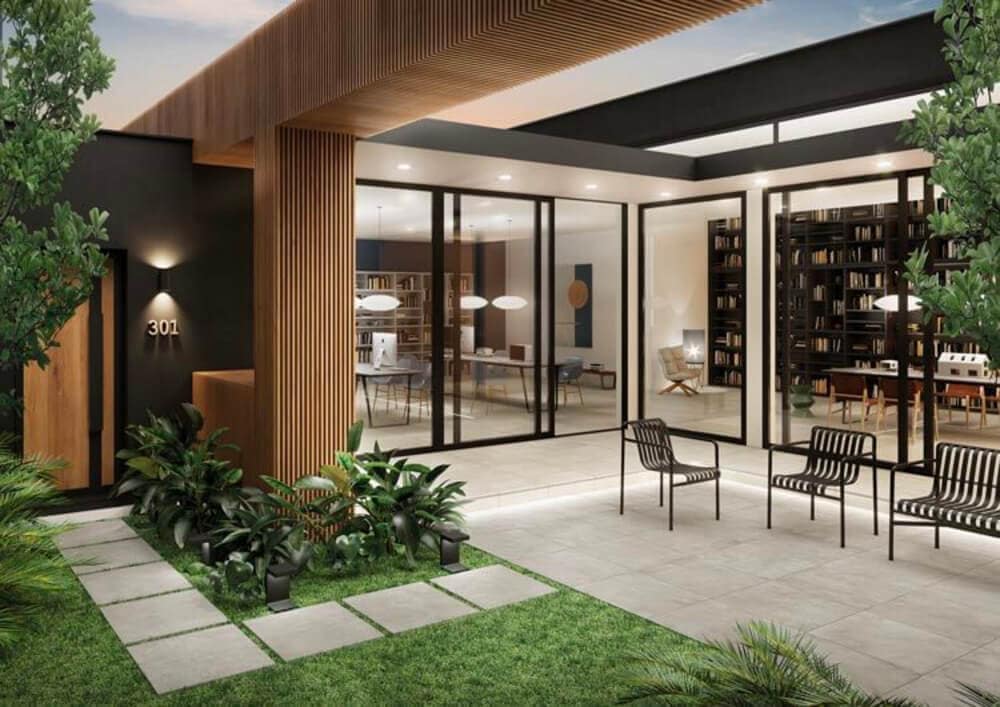
Porcelain pavers are also commonly used in patios, porches, decks, and other outdoor spaces.
Patio tile pavers are an easy option to create defined areas in your front yard or backyard.
[Related: Get Outside With Our Guide to Outdoor Tile]
Steps and Staircases

You can even use this kind of paver for steps. Using porcelain pavers as steps enables you to keep designs consistent across upper and lower levels in your outdoor space.
Driveways

Thanks to porcelain’s extreme durability and pavers’ increased thickness, you can use these kinds of pavers for driveways.
With porcelain driveway pavers, you can create a variety of looks and patterns for your driveway instead of a bland solid surface.
Rooftop Terraces

Porcelain pavers aren’t only destined for around your home or business — you can also use them on top of it!
Pools With Pavers

Porcelain pool pavers allow you to create a stunning pool surround without concerns about water damage or fading from the sun. Likewise, you can choose pavers with a product use classification for the outdoor wet conditions you expect around your pool to ensure you have the appropriate slip resistance. With pool deck pavers, you can even create a zero-edge design such as the one above.
[Related: Not Your Typical Pool Tile]
Indoor-Outdoor Porcelain Pavers
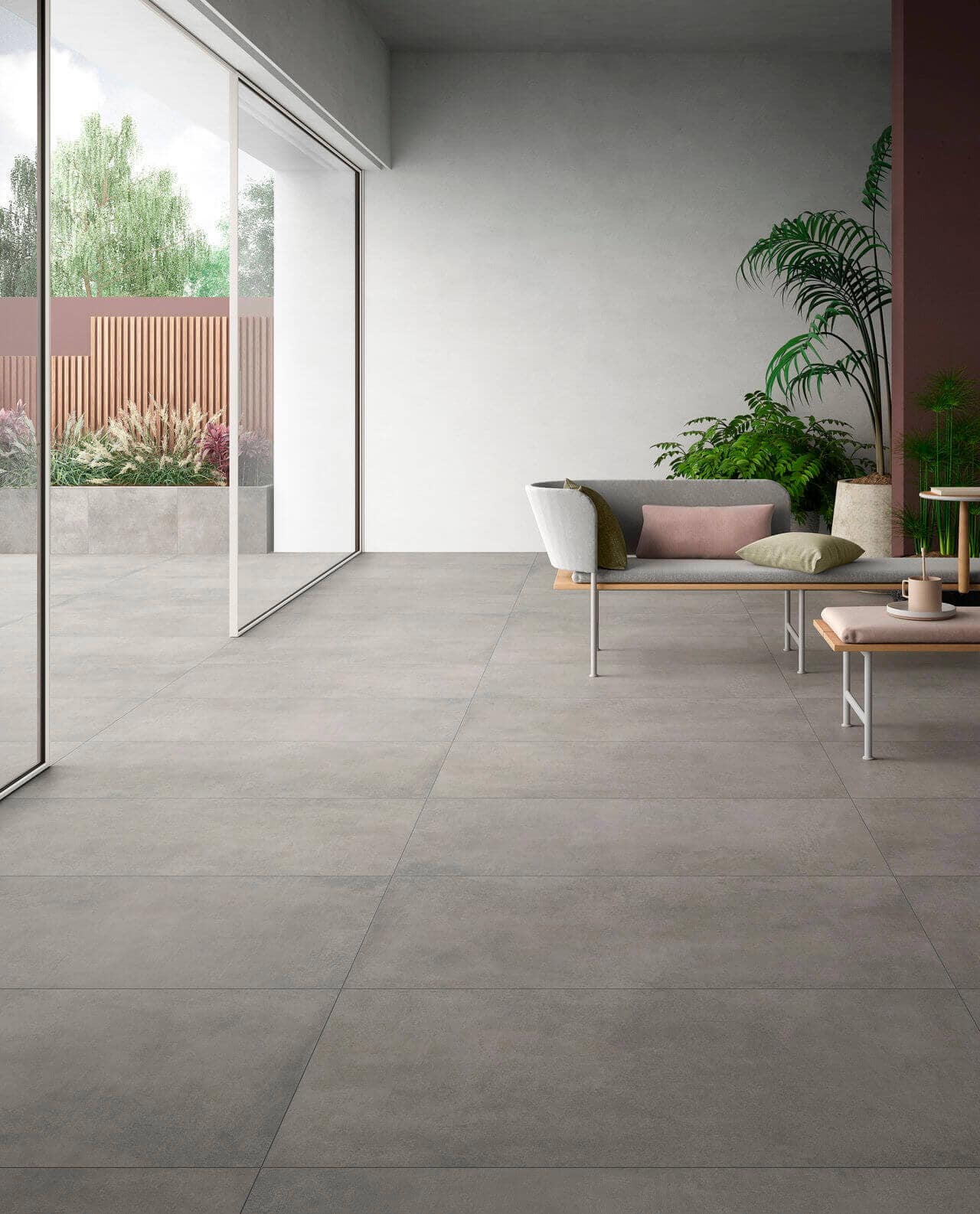
You can use the same look both inside and outside your home with pavers in the same style as interior porcelain tile, creating a seamless indoor-outdoor transition.
[Related: Indoor-Outdoor Tile: Your Complete Guide]
Porcelain Paver FAQs
What is the difference between tiles and pavers?
Porcelain pavers are thicker than porcelain tiles. This gives them added strength, makes them ideal for a wide range of outdoor applications, and enables them to be installed without adhesives.
How thick are porcelain pavers?
Gauged porcelain pavers are typically 2 cm thick and thicker
Are porcelain pavers durable?
Yes! They’re known for their durability to withstand outdoor debris, heavy patio furniture, and weather extremes without scratching, staining, fading, or warping. Options are available that also withstand repeated freeze-thaw conditions.
How much are porcelain pavers?
It typically cost between $7 and $10 per square foot, although costs vary depending on the style that you purchase. Keep in mind that porcelain tile has one of the lowest life cycle costs of any flooring material. Even if they have a higher up-front cost than other paver options, they will cost less over their life span thanks to their durability and longevity.
How many pavers do I need?
It depends on the size that you purchase and the size of the area you’re covering. To calculate what you need, divide the square footage of the area you’re covering by the square footage of the paver to get the number of pavers you’ll need. Pro tip: Add 10% to this total to allow for matching designs and fitting around corners.
Area square footage / paver square footage = number of pavers to purchase
Are porcelain pavers slippery?
Porcelain pavers come in slip-resistant options, making them ideal for uncovered outdoor applications and pool surrounds. You can also choose textured pavers to increase the slip resistance of your outdoor flooring.
Can you drive on porcelain pavers?
Yes! These pavers are engineered to withstand up to 2,200 pounds.
Do porcelain pavers need to be sealed?
No — you don’t need to use any sealers or coatings to protect your pavers, unlike with concrete.
Can pavers go over concrete?
Yes, you can lay them over existing concrete. In fact, laying pavers over concrete (with the appropriate mortar) is necessary if you plan on driving over them.
Can you lay porcelain pavers on sand and gravel?
Yes, you can lay them on sand as well as gravel. The added thickness enables them to be dry-installed without adhesives.
Can you lay porcelain pavers on grass?
Yes, you can lay them on grass directly without using any adhesives. In fact, spacing out pavers with grass in between is a popular look for outdoor patios and walkways.
Should I put a weed barrier under pavers?
If you’re wondering what to put under pavers to prevent weeds, a weed barrier is not the answer. Laying a weed barrier under your porcelain pavers will not prevent weed growth because the weeds do not come from underground. Instead, most weeds between pavers are caused by dirt that accumulates between joints and acts as a planting zone for seeds to settle and spout. So, to prevent weed growth, regularly clean dirt from the top of your pavers by sweeping or pressure washing.
Can a tile saw cut pavers?
Yes, a tile saw can cut porcelain. However, given the extreme durability of porcelain, a higher-quality blade may be necessary. If you don’t already know how to cut porcelain pavers, we recommend working with a certified tile installer. They will have the proper tools, skills, and expertise to cut and install.
Can you put a fire pit on pavers?
Yes, you can put a fire pit on pavers. They’re flame-resistant, meaning they won’t burn, melt or give off toxic fumes when exposed to fire.
Pave Your Home With Porcelain
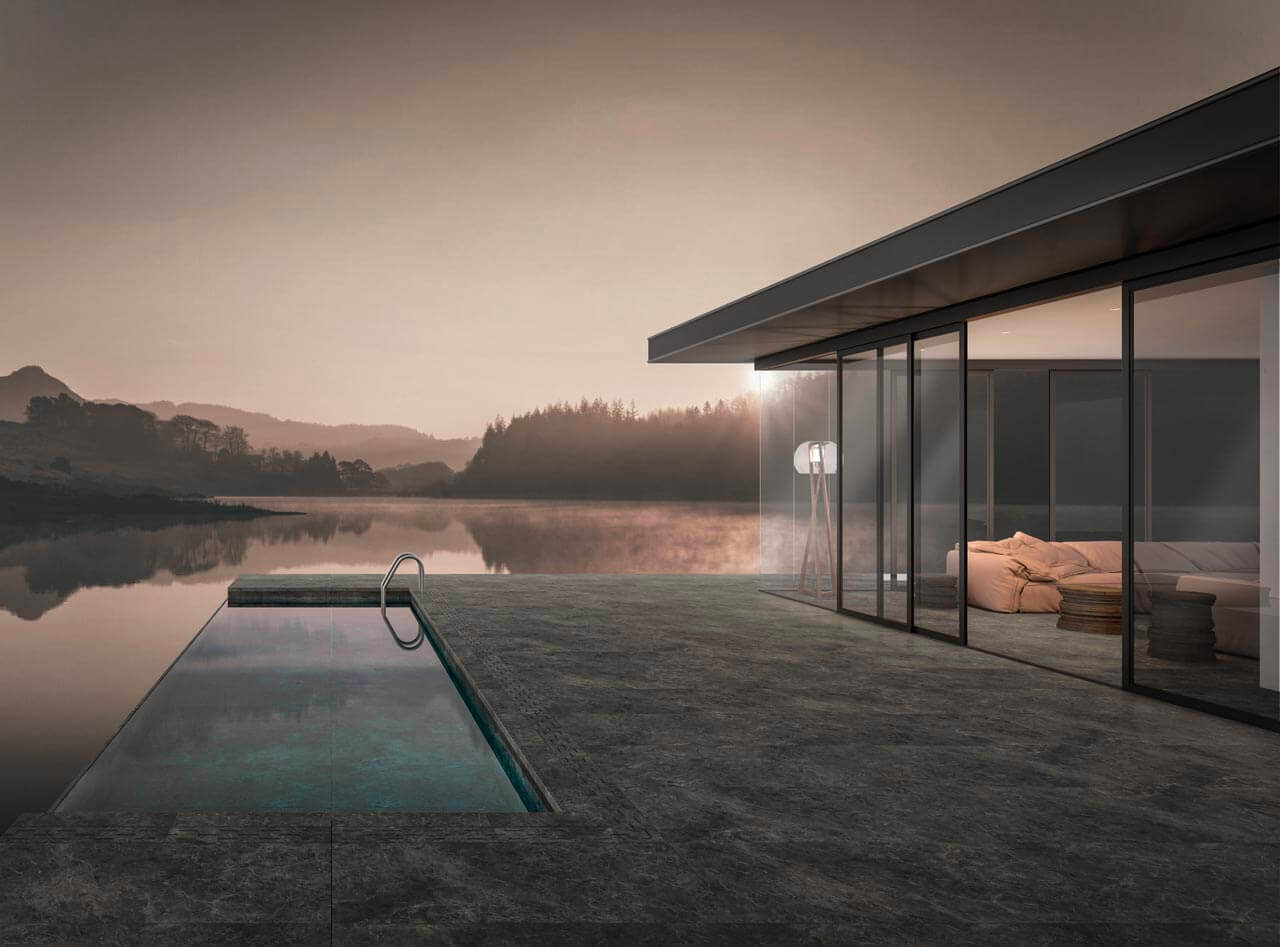
We hope you’re just as taken with porcelain pavers as we are and are ready to create your very own paved paradise.
Visit the Ceramic Tile Distributors Association (CTDA) and the Porcelain Tile Certification Agency (PTCA) sites to find certified porcelain tile manufacturers and distributors in your area.

